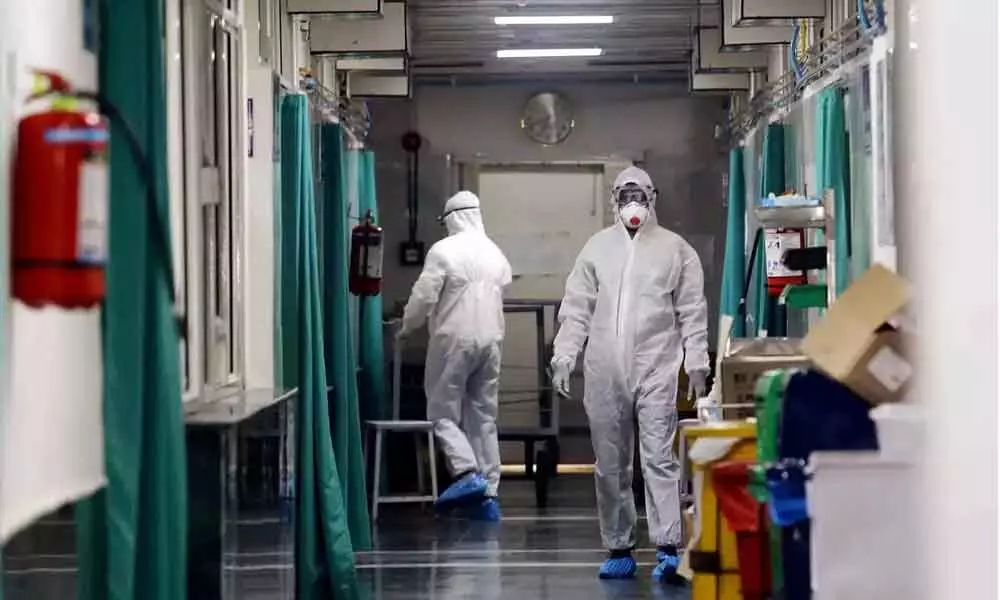Higher occupancy to drive recovery for private hospitals

Higher occupancy due to a surge in Covid-19 treatments will help private hospitals bounce back
Higher occupancy due to a surge in Covid-19 treatments will help private hospitals bounce back with 15-17 per cent growth in revenue this fiscal, a shade above what they attained in the pre-pandemic year of fiscal 2020, Crisil said on Tuesday.
Mumbai, June 22: Higher occupancy due to a surge in Covid-19 treatments will help private hospitals bounce back with 15-17 per cent growth in revenue this fiscal, a shade above what they attained in the pre-pandemic year of fiscal 2020, Crisil said on Tuesday.
According to a report by the ratings agency, higher occupancy and revenue will aid recovery of operating margin by 100-200 basis points (bps) to 13-14 per cent, but still fall short of the fiscal 2020 mark due to higher proportion of Covid-19 treatments, which are less profitable.
That said, recovery in operating margins will render stability to credit profiles, even as capital spending is enhanced after the curtailment last year, an analysis of 40 hospital companies (including 36 rated by CRISIL Ratings), with a combined revenue of about Rs 32,000 crore, showed.
To recall, the performance of hospitals was severely impacted in the first quarter of last fiscal due to postponement of elective surgeries and preventive healthcare (which together account for 60 per cent of revenue), in addition to travel restrictions and curbs on Covid-19 treatment by private hospitals.
The sector clawed back in the second quarter and had recovered completely by the third as elective surgeries and preventive healthcare treatment increased and Covid-19 treatments, too, were permitted for most private hospitals. This helped limit the overall revenue decline to 12 per cent for the full year.
Manish Gupta, Senior Director, CRISIL Ratings, said: "While the second wave lashed again in April, the first quarter this fiscal will be sharply better on-year, with occupancy of 75 per cent, almost double on-year. This will be largely on account of a surge in Covid-19 treatments more than offsetting the deferral of elective surgeries and outpatient footfalls. As the second wave recedes in the second quarter, we expect pent-up demand for non-Covid-19 treatments to rebound and support occupancies. Overall, higher occupancies of 65-70 per cent this fiscal versus 58 per cent in the last, would drive rebound in revenue growth."
Higher occupancy should, in turn, drive recovery in operating margin as well, but remain short of the pre-pandemic level of 15 per cent. Much of the revenue increase would be on account of Covid-19 beds, which can realise only 50-60 per cent of average revenue per bed for non-Covid-19 treatments, as state governments cap the charges.
Additionally, hospitals have to pay higher incentives to para-medical and support staff amid the second wave of the pandemic. This will weigh on margins, Crisil said.
Rajeswari Karthigeyan, Associate Director, CRISIL Ratings, said, "Recovery in revenue and margins will nevertheless spur hospitals to resurrect capex, which had almost halved on-year last fiscal. Much of the capex this fiscal is expected to be brownfield in nature, towards bed addition and related infrastructure including oxygen plants, funded significantly through accruals. The Rs 50,000 crore liquidity window offered by the RBI to augment healthcare infrastructure is expected to help in this regard - the three-year loan tenure will suit brownfield expansions and low-cost funding will particularly help mid and small-sized hospitals."
Backed by improved profitability, we expect to see better debt protection metrics after the temporary dent last year. Interest cover and debt to Ebitda ratios are seen improving to 4.5 times and 2.3 times from 3.2 times and 2.9 times, respectively, last fiscal - both reaching close to pre-pandemic levels. This would support 'stable' credit profiles.
Crisil said that though its view is based on the expectation of Covid-19 cases declining from the second quarter onwards, an intense third wave and stringent regulatory control over the cost of Covid-19 treatments will remain monitorables.














